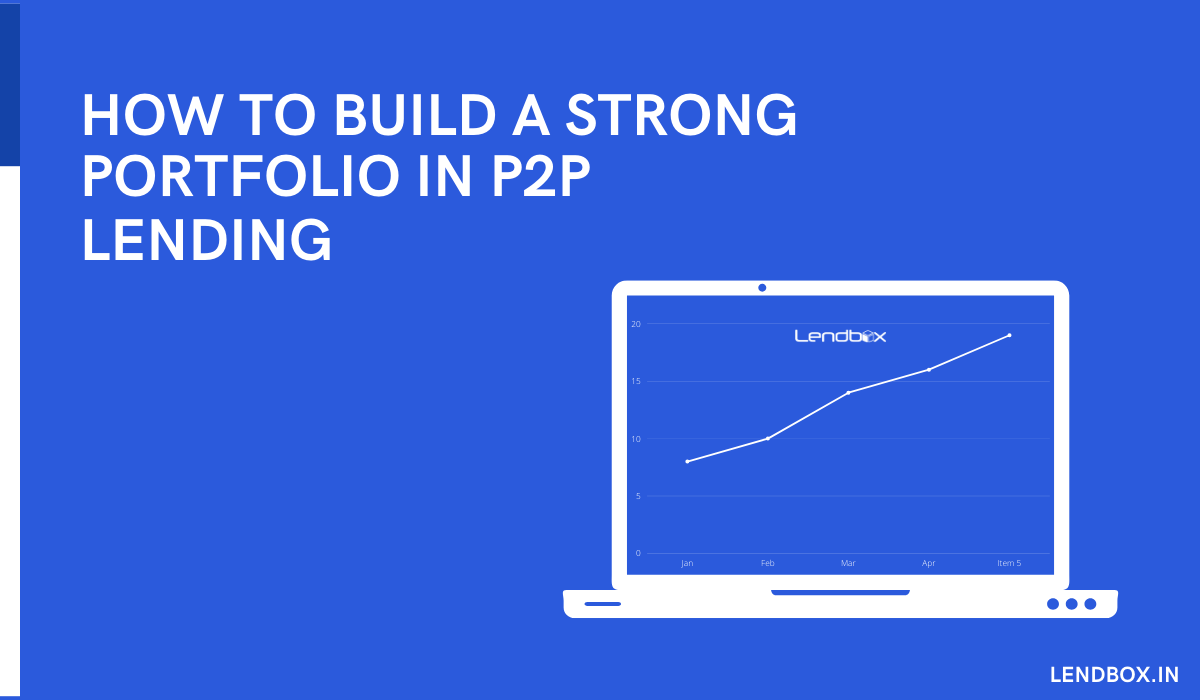+91-7291029298
Strategies To Build A Solid Portfolio With P2P Lending
Fri Dec 04 2020 by Bhuvan Rustagi
Although peer to peer(P2P) lending has been around for quite some time, it has seen a wide range of customer returns, especially during turbulent times. Successful customers have earned high inflation-beating returns but things don't always go well that's why it's better to systematically adjust associated risks instead of lending on instincts and luck.

How does a lender ensure that his return falls at least between the adequate average? This article dives deep into P2P Lending and the strategies one can adopt to build a solid portfolio with P2P Lending.
How Does Peer to Peer Lending Work?
In simple words, with peer to peer lending, a lender lends money to multiple borrowers and gets repaid with additional interest while Lendbox serves as an online P2P platform that connects borrowers seeking a personal loan with willing lenders without the involvement of a third party. Sounds pretty straightforward? Well, there's much more to it.
P2P financial framework is a convenient replacement for the lending services traditionally offered by banks or other institutions as it cuts out the middlemen. This effective lending arrangement benefits both parties as it offers cheaper loans to borrowers and competitive rates to lenders.
The peer-to-peer platform checks the creditworthiness of the borrower to ensure the security of the lender’s funds. Platforms also permit lenders to choose their borrowers, giving them power to control the risk that is taken. In a P2P financial transaction, the borrower pays back the loan with interest which becomes the profit for the lender.
The lender can then decide whether he wishes to withdraw the returns or re-lend them to maximise returns.
How to Lend in P2P Lending?
The steps are as follows:
- Register as a lender on the desired lending platform
- Transfer funds to it and check your escrow account
- Choose loans where you want to lend your money.
- Select the borrowers according to your risk appetite.
- E-sign the consent form.
- The lending platform will disburse the funds to the borrower
- Later, it will collect the payments and distribute it to the lenders with interest
Tips to Build a Solid Portfolio with P2P Lending
P2P lending brings to the lenders higher rates of interest than many other options. Given below are key strategies to build a solid portfolio with P2P lending:
Diversification
Diversification is the key to smart P2P lending. The opportunity for a good return will be limited if the lender doesn’t diversify. With diversification, the damage caused due to defaults can be minimised.
Small loan amounts must be spread across a large number of borrowers with varying demographics, gender, location, occupation and risk appetite. P2P Lending diversification involves various borrowers with varying profiles, credit profiles, and repayment ability offering a myriad of choices.
Lend slowly and carefully
Slow and steady lending works best for P2P Lending. The ideal approach will be to lend in a certain percentage of the lender’s portfolio in every loan, and then subsequently lend more when more loans become available. This process ensures the utilisation of all the funds resulting in a high-performing portfolio.
Choose Loans Carefully
There are hundreds of loans to lend in and it may be a daunting task to choose from them. The lender must analyse the loans individually and narrow them down based on various criteria. Filtering and choosing the loans helps to know the details of the individual borrower. The lender can also ask questions to the borrower and make an informed decision.
Go for Long-Term Loans
Most long-term loans offer a 2% to 3% boost in interest rates. Even if there are defaults, they will occur early in the loan life cycle offering some wiggle room with the high interest rate.
If one chooses his loans carefully, he can limit the number of defaults and the risk of a longer duration is worth it because of the good interest rates. A tenure plan for 2 to 3 years is ideal to receive reasonable returns from P2P lending as returns compound over time, boosting the ROI.
Stay Committed
It is never a good idea to keep money idle if one wants to grow his portfolio. P2P Lending delivers high returns in comparison to mutual funds, or stocks. The lender can begin with any amount starting from Rs. 25,000 and steadily go up to 50 lakhs depending on his risk appetite.
The Final Word
Several lenders are drawn to P2P Lending due to the attractive returns but only a few take the time and effort to understand how to maximise the returns from their P2P Lending. By adopting a few vital strategies to building a P2P lending portfolio, the money lent can turn out highly profitable earning above average returns.
Lendbox, which is one of the leading P2P lending platforms in India offers a seamless and non-market linked platform to give a boost to your savings. All savings are directly diverted to the lenders at high returns without any intermediaries. Get a customised lending plan from experienced wealth managers and lend only after satisfaction. Click here to sign up!





